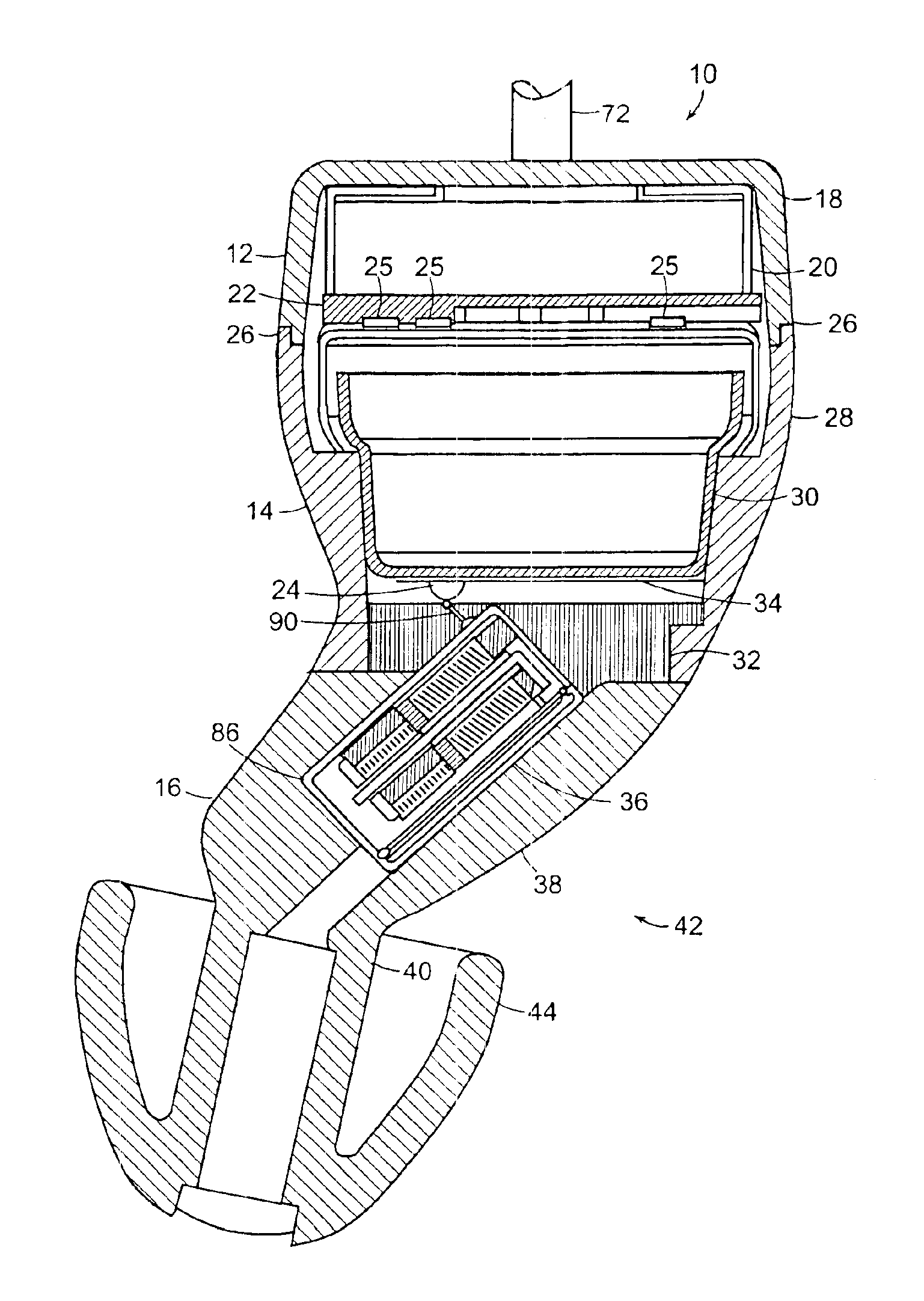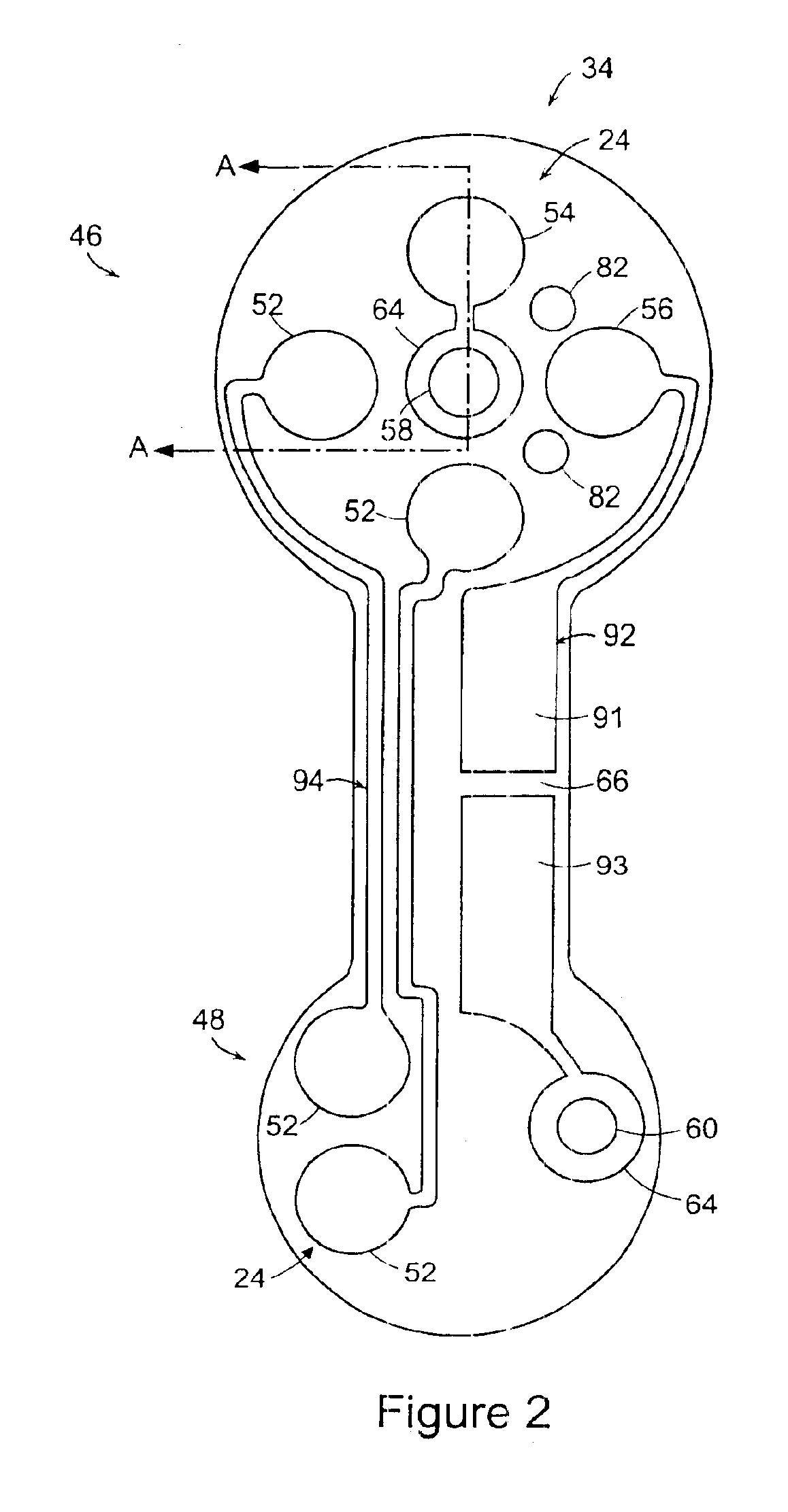Hearing aid with a flexible shell
a flexible shell and hearing aid technology, applied in the field of hearing aids, can solve the problems of time-consuming manufacturing process, difficult to replace batteries, and relatively high cost of hearing aids,
- Summary
- Abstract
- Description
- Claims
- Application Information
AI Technical Summary
Benefits of technology
Problems solved by technology
Method used
Image
Examples
Embodiment Construction
A hearing aid is shown in FIG. 1 and is given generally as 10. The hearing aid includes a first section 12, a second section 14 and a third section 16.
The first section 12 includes a cup or first section housing 18, a microphone 20, and electronics such as a microphone circuit board 22. The cup 18 can be a shell formed from a plastic material. The microphone 20 is secured within the cup 18 with a securing mechanism between the microphone 20 and cup 18. The securing mechanism can include a snap fit or a friction fit between the microphone 20 and cup 18. The microphone 20 and cup 18 can be provided as a complete subassembly. The microphone circuit board 22 includes a plurality of conductive protrusions 25 which interface electronically with the second section 14 of the hearing aid 10 and provide for an electrical connection between the microphone 20 and the second section 14. Preferably, the circuit board 22 includes three conductive protrusions 25. The conductive protrusions 25 can b...
PUM
 Login to View More
Login to View More Abstract
Description
Claims
Application Information
 Login to View More
Login to View More - R&D
- Intellectual Property
- Life Sciences
- Materials
- Tech Scout
- Unparalleled Data Quality
- Higher Quality Content
- 60% Fewer Hallucinations
Browse by: Latest US Patents, China's latest patents, Technical Efficacy Thesaurus, Application Domain, Technology Topic, Popular Technical Reports.
© 2025 PatSnap. All rights reserved.Legal|Privacy policy|Modern Slavery Act Transparency Statement|Sitemap|About US| Contact US: help@patsnap.com



